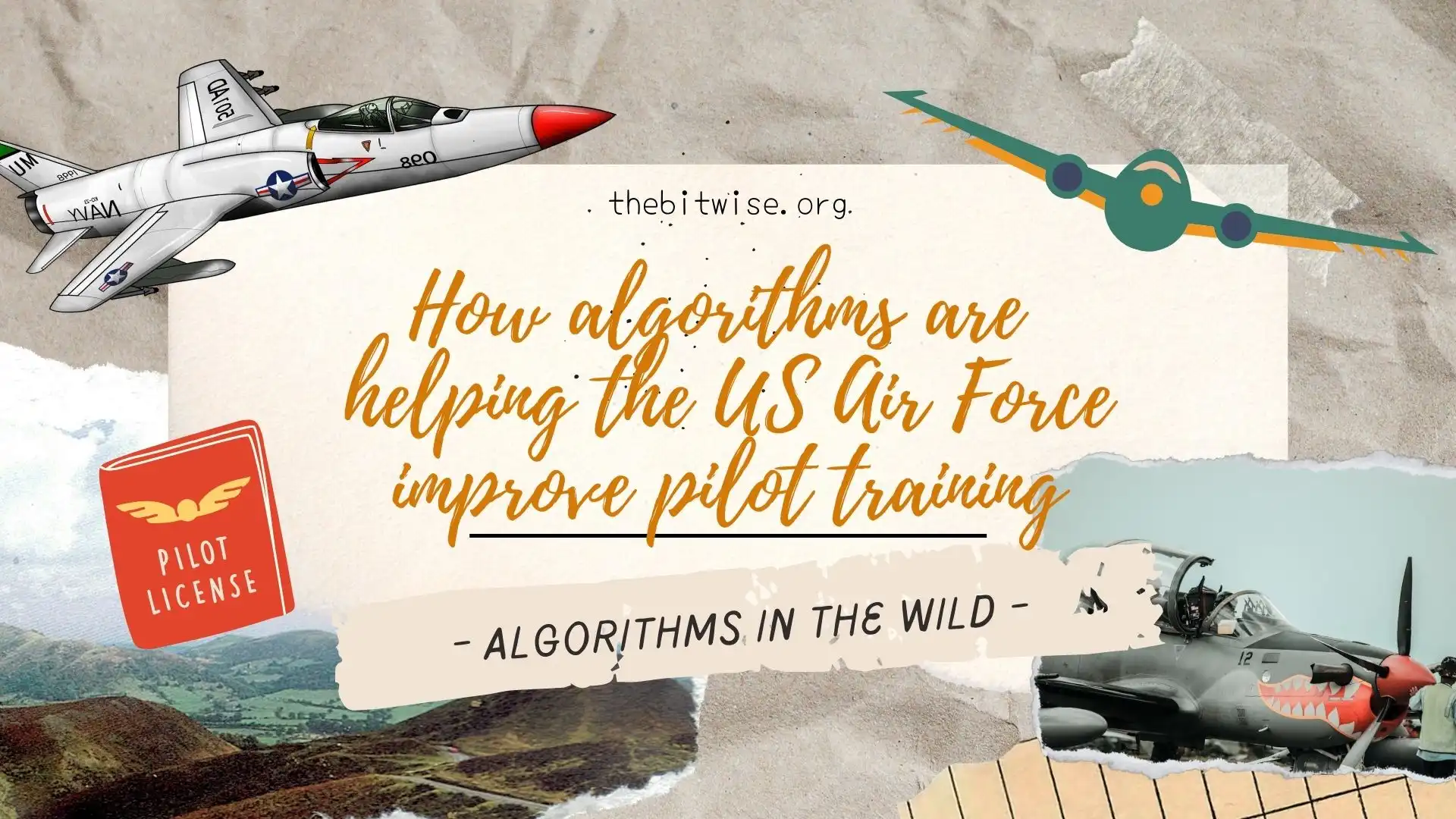
How Machine Learning Algorithms are Helping the US Air Force Improve Pilot Training
Today’s post is the first in a new series called Algorithms in the Wild, where we’ll discuss case studies featuring machine learning algorithms in some very interesting applications! Our first case study comes from an article in Popular Science on How AI could help new Air Force pilots avoid costly mistakes from Popular Science.
Machine learning and pilot training
Since March of 2021, the US Air Force has been working with a company called Crowdbotics on Phase 2 of a project to track and analyze training flight data for pilots at the Seymour Johnson Air Force Base in North Carolina. The contract is funded through a Small Business Innovation Research funding program designed to foster research between small businesses and federal entities with potential for commercialization.
In the current phase, the program focuses only on training flights from F-15E planes in a training squadron at Seymour Johnson Air Force Base. However, the Air Force Base admits 40 to 50 new training pilots every year so they hope to scale the program up to include more planes and pilots.
Motivated by an idea to incorporate machine learning in flight debriefing process
Large quantities of avionics and telemetry data are recorded during every flight. These include multiple measurements of a plane’s time, position, and speed at every second throughout a flight. Although the resulting data are rich in detail and contain potentially extremely useful information, they are too large to be analyzed systematically by people.

In fact, this collaboration was motivated by the flight debriefings that occur after something goes wrong on a flight. In these cases, instructors and trainees typically will watch hours of flight footage to try to identify the things that went wrong and to understand how to address those issues. This manual approach, however, can only detect really big problems that are obvious to the human eye.
Therefore, the hope is to better detect those problems as well as more nuanced issues by incorporating computers and algorithms. The process of employing computers and algorithms to automatically detect patterns in large quantities of data is commonly referred to as machine learning.
Building “pictures” of “typical” flights and outlier detection
Currently, they’re collecting massive quantities of flight data on individual pilots. One goal is to combine and analyze all these data to automatically identify “typical” flights patterns. Using these baseline patterns, they can apply algorithms for outlier detection to identify when there are significant deviations from typical flights.
Automatically detecting outliers after a flight has the potential to speed up and improve flight debriefings with more detailed information after things go wrong. They hope to do even better, however, by automatically detecting outliers during a flight. This way, instructors can address major problems during the flight before things go wrong.
Potential impact for improving flight training and beyond
Collaborations such as this one between the US Air Force and Crowdbotics have the potential for huge impact! Below are just a few!
- First, identifying outliers in flight patterns after flights may improve flight training by bringing attention to issues that aren’t obvious to the human eye that need to be addressed. It can also to help speed up the process of finding problems that happened during a flight.
- Second, identifying outliers during flights has the potential to further save lives and resources by preventing serious problems from happening.
- Third, collecting a massive database of individual flight data on thousands of flights by potentially hundreds of pilots can help to develop richer and more complex models of typical flights under a wide variety of scenarios.
- Fourth, using computers and algorithms to automatically compare an individual pilot’s flight data to this massive database can help to identify areas where trainee pilots are excelling or where they may need to improve. The findings from these analyses can help flight instructors to more quickly customize and target the training for their pilots. This may help to shorten the time required to train and prepare new pilots.
- Finally, this massive database can be also be used to identify pilots who are ready for combat, and to identify those pilots who may be more prepared or suited for particular missions.
In the future, they hope to extend the data collection to more planes and pilots. It will be very exciting to watch the progress of these collaborations!


